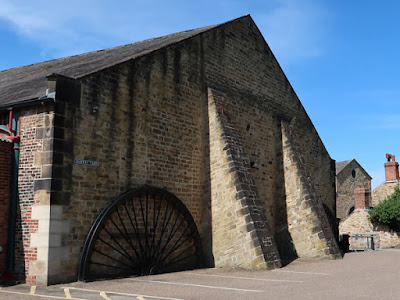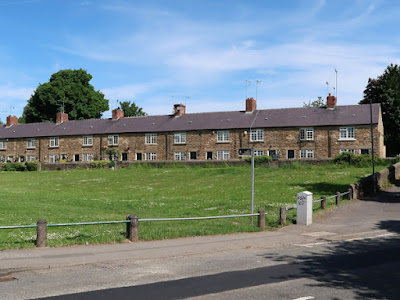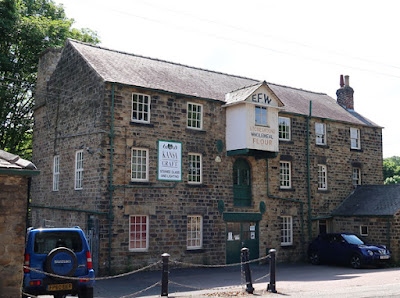 |
| A detail of the former rolling mill at Elsecar Ironworks |
The village of Elsecar is effectively the product of the Industrial Revolution, with the exploitation of the Kent’s Thin and Thick coal seams under the Fitzwilliam Estate and the development of an iron industry being initiated by the Marquess of Rockingham, who lived at nearby Wentworth Woodhouse, and his successors who bore the title Earl Fitzwilliam.
Elsecar Old Colliery (1750) comprised a series of shallow pits and New Colliery (1795) was the first to sink a proper shaft, with an increase in production coinciding with the construction of the Elsecar branch of the Dove and Dearne Canal, which was finished in 1795.
The Elsecar Ironworks was established in 1795 and the Milton Ironworks, 1 km to the east, was built in 1799 with an inclined horse drawn tramroad linking this works, the Tankersley Park ironstone mines and the Thorncliffe Ironworks to the canal in 1838. Even before the arrival of the railway, the 1855 Ordnance Map shows that much of the complex of workshops that now forms the Elsecar Heritage Centre had already been built.
Arriving in Elsecar along the public footpath that runs from the escarpment of Kent’s Rock, after my walk from Wentworth, my first view of the centre was a stretch of Carboniferous sandstone walling that marks the position of a series of buildings erected in the mid C19 to serve the growing Elsecar Central Workshops.
I didn’t take any time to look at it it closely because, although only 10:30 AM, unless I got back to Wentworth for 12:50 PM there wouldn’t be a bus back to Rotherham for another 2 hours. I therefore just had a quick look around Elsecar Heritage Centre and took a few photos of some of the Grade II Listed buildings for the British Listed Buildings website, before heading off up Wath Road to find Holy Trinity church.
Passing the site of the old tramway, just beyond a large open area of grassland, I was curious about the terrace of 15 sandstone houses known as Old Row, which were built in the late C18 by the Fitzwilliam Estate for the workers at Elsecar New Colliery.
Workers’ housing provided by the Fitzwilliam Estate was regarded as being of a superior quality, but I didn’t go and take a close look at them. I instead continued along Wath Road, noticing the variable quality of building stone used for Station Row and stopped only to photograph Elsecar Mill.
Looking at the time, I decided not to go and investigate yet more terraced houses that include the Grade II Listed Reform Row, dated 1837, and had a quick look at the Holy Trinity school before having a wander around the exterior of the church.








No comments:
Post a Comment